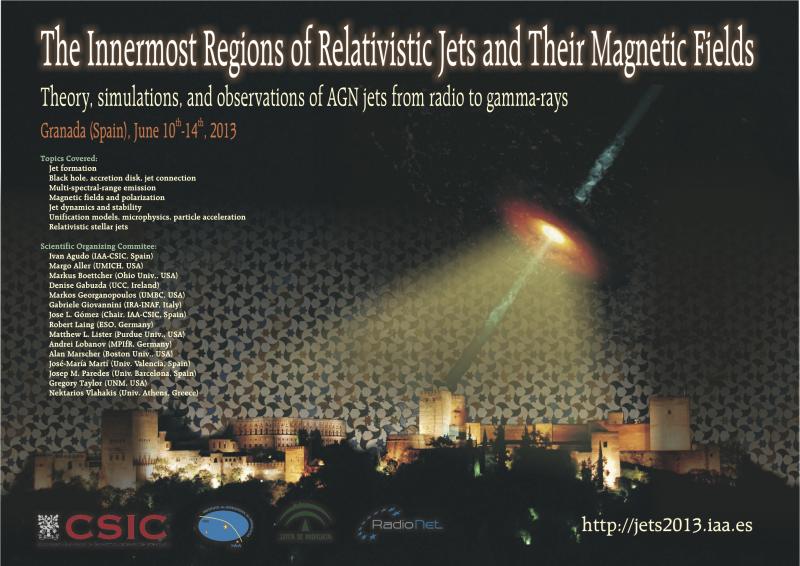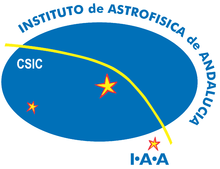The Innermost Regions of Relativistic Jets and Their Magnetic Fields. Granada (Spain). June 10th-14th, 2013.
Jermak, Helen
Exploring the magnetic fields of blazar jets using the optical imaging polarimeter RINGO3 on the Liverpool Telescope.
Author list: Helen Jermak, Carole Mundell, Kari Nilsson, Elina Lindfors, Ulisses Barres de Almeida, Iain Steele
Blazars are a subclass of active galactic nuclei (AGN) in which the jet is orientated within a small opening angle to the observer's line of sight. To understand the physical processes that underlie the formation, ejection and collimation of these highly relativistic jets, it is important to explore both the energetic periods of the AGN (i.e. flares and outbursts) and also quiescent periods. Magnetic fields are fundamental to the collimation and acceleration of the jet but spatially resolved images of blazar jets cannot be made; measuring the polarisation properties of the emitted radiation therefore provides a powerful source of information about the structured areas of the magnetic field along with the disrupted sections that may give rise to shocks and flares.
I present an ongoing imaging polarisation study with the Liverpool Telescope (LT) of a sample of 16 AGN that have shown high-energy gamma-ray flares, detected with Fermi and MAGIC. The LT is a 2-metre telescope which specialises in rapid-reaction and time variable astronomy and is the world's largest unmanned, fully autonomous optical telescope, robotically observing since 2004. Using the novel RINGO2 polarimeter on the LT, our team's optical imaging polarimetry program monitors blazars both in quiescence and during triggered high-energy flare events. This talk will introduce the sample, the observing techniques, initial results and highlights. I will also describe our next generation, multi-colour rapid response imaging polarimeter - RINGO3 - which provides unique polarisation data in 3 colour bands (covering 400-900 nm) and the contribution of the additional 'skycam' camera that is attached to the Liverpool Telescope and provides independent flux monitoring simultaneous with the RINGO measurements.




